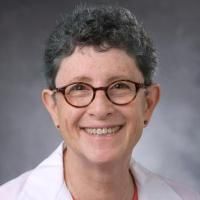Outcomes of allogeneic hematopoietic cell transplantation in patients with dyskeratosis congenita.
Date
2013-08
Journal Title
Journal ISSN
Volume Title
Repository Usage Stats
views
downloads
Citation Stats
Attention Stats
Abstract
We describe outcomes after allogeneic transplantation in 34 patients with dyskeratosis congenita who underwent transplantation between 1981 and 2009. The median age at transplantation was 13 years (range, 2 to 35). Approximately 50% of transplantations were from related donors. Bone marrow was the predominant source of stem cells (24 of 34). The day-28 probability of neutrophil recovery was 73% and the day-100 platelet recovery was 72%. The day-100 probability of grade II to IV acute GVHD and the 3-year probability of chronic graft-versus-host disease were 24% and 37%, respectively. The 10-year probability of survival was 30%; 14 patients were alive at last follow-up. Ten deaths occurred within 4 months from transplantation because of graft failure (n = 6) or other transplantation-related complications; 9 of these patients had undergone transplantation from mismatched related or from unrelated donors. Another 10 deaths occurred after 4 months; 6 of them occurred more than 5 years after transplantation, and 4 of these were attributed to pulmonary failure. Transplantation regimen intensity and transplantations from mismatched related or unrelated donors were associated with early mortality. Transplantation of grafts from HLA-matched siblings with cyclophosphamide-containing nonradiation regimens was associated with early low toxicity. Late mortality was attributed mainly to pulmonary complications and likely related to the underlying disease.
Type
Department
Description
Provenance
Subjects
Citation
Permalink
Published Version (Please cite this version)
Publication Info
Gadalla, Shahinaz M, Carmem Sales-Bonfim, Jeanette Carreras, Blanche P Alter, Joseph H Antin, Mouhab Ayas, Prasad Bodhi, Jeffrey Davis, et al. (2013). Outcomes of allogeneic hematopoietic cell transplantation in patients with dyskeratosis congenita. Biology of blood and marrow transplantation : journal of the American Society for Blood and Marrow Transplantation, 19(8). pp. 1238–1243. 10.1016/j.bbmt.2013.05.021 Retrieved from https://hdl.handle.net/10161/24684.
This is constructed from limited available data and may be imprecise. To cite this article, please review & use the official citation provided by the journal.
Collections
Scholars@Duke

Joanne Kurtzberg
Dr. Kurtzberg is an internationally renowned expert in pediatric hematology/oncology, pediatric blood and marrow transplantation, umbilical cord blood banking and transplantation, and novel applications of cord blood and birthing tissues in the emerging fields of cellular therapies and regenerative medicine. Dr. Kurtzberg serves as the Director of the Marcus Center for Cellular Cures (MC3), Director of the Pediatric Transplant and Cellular Therapy Program, Director of the Carolinas Cord Blood Bank, and Co-Director of the Stem Cell Transplant Laboratory at Duke University. The Carolinas Cord Blood Bank is an FDA licensed public cord blood bank distributing unrelated cord blood units for donors for hematopoietic stem cell transplantation (HSCT) through the CW Bill Young Cell Transplantation Program. The Robertson GMP Cell Manufacturing Laboratory supports manufacturing of RETHYMIC (BLA, Enzyvant, 2021), allogeneic cord tissue derived and bone marrow derived mesenchymal stromal cells (MSCs), and DUOC, a microglial/macrophage cell derived from cord blood.
Dr. Kurtzberg’s research in MC3 focuses on translational studies from bench to bedside, seeking to develop transformative clinical therapies using cells, tissues, molecules, genes, and biomaterials to treat diseases and injuries that currently lack effective treatments. Recent areas of investigation in MC3 include clinical trials investigating the safety and efficacy of autologous and allogeneic cord blood in children with neonatal brain injury – hypoxic ischemic encephalopathy (HIE), cerebral palsy (CP), and autism. Clinical trials testing allogeneic cord blood are also being conducted in adults with acute ischemic stroke. Clinical trials optimizing manufacturing and testing the safety and efficacy of cord tissue MSCs in children with autism, CP and HIE and adults with COVID-lung disease are underway. DUOC, given intrathecally, is under study in children with leukodystrophies and adults with primary progressive multiple sclerosis.
In the past, Dr. Kurtzberg has developed novel chemotherapeutic drugs for acute leukemias, assays enumerating ALDH bright cells to predict cord blood unit potency, methods of cord blood expansion, potency assays for targeted cell and tissue based therapies. Dr. Kurtzberg currently holds several INDs for investigational clinical trials from the FDA. She has also trained numerous medical students, residents, clinical and post-doctoral fellows over the course of her career.
Unless otherwise indicated, scholarly articles published by Duke faculty members are made available here with a CC-BY-NC (Creative Commons Attribution Non-Commercial) license, as enabled by the Duke Open Access Policy. If you wish to use the materials in ways not already permitted under CC-BY-NC, please consult the copyright owner. Other materials are made available here through the author’s grant of a non-exclusive license to make their work openly accessible.
